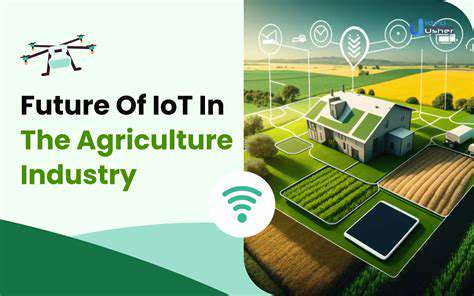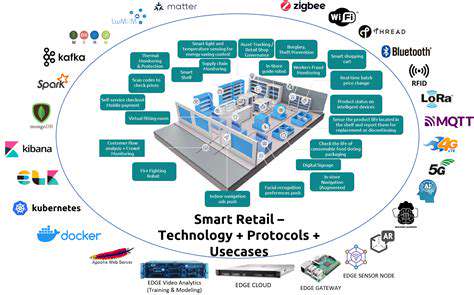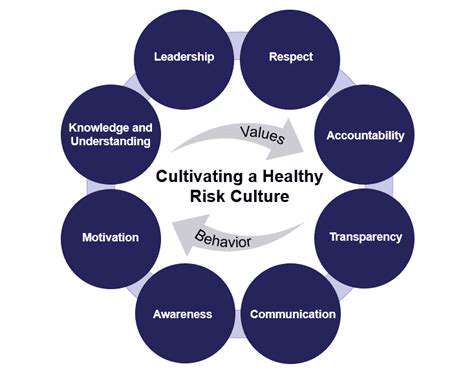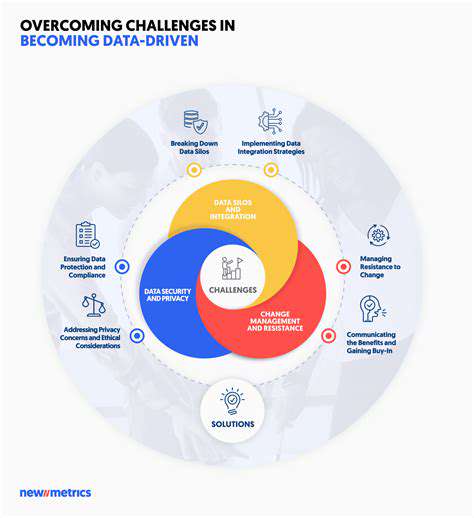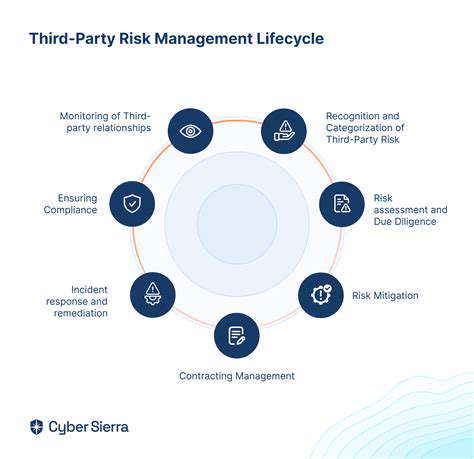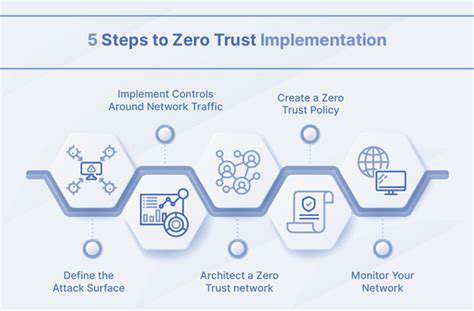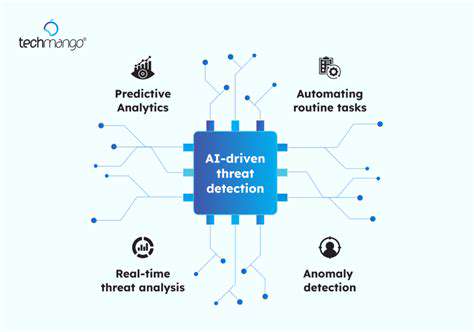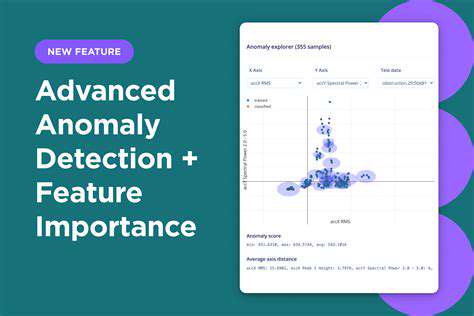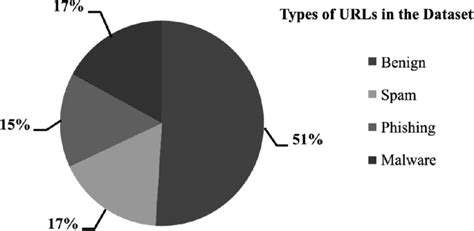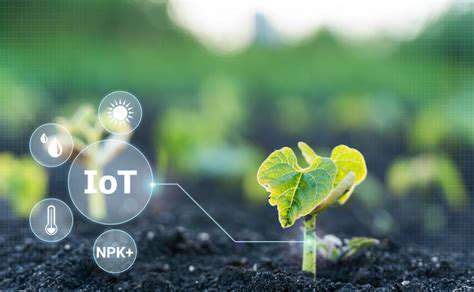
Protecting Crops with Precision Agriculture
Precision Irrigation Systems
Precision agriculture utilizes sensors and data analytics to optimize irrigation, ensuring crops receive the exact amount of water needed at the optimal time. This targeted approach minimizes water waste, reduces the risk of overwatering, and promotes healthier plant growth. By measuring soil moisture levels and weather conditions, sophisticated irrigation systems deliver water directly to the root zone, maximizing efficiency and minimizing environmental impact. This targeted approach is crucial for water conservation and sustainable agriculture in regions facing water scarcity.
Innovative sensors embedded in the soil provide real-time data on moisture levels, enabling automated irrigation systems to adjust water delivery based on specific crop needs. This precision approach allows farmers to significantly reduce water consumption, leading to substantial cost savings and a lower carbon footprint.
Variable Rate Technology for Fertilizers
Precision agriculture implements variable rate technology (VRT) to distribute fertilizers precisely where and when they are needed. This targeted approach avoids unnecessary fertilizer application in areas where it's not required, minimizing environmental impact and promoting sustainable farming practices. By using GPS-guided equipment and soil sensors, farmers can apply fertilizers at the precise rates needed by specific crop rows or areas within a field, leading to optimized nutrient delivery and reduced waste.
The accurate application of fertilizers based on soil analysis ensures that crops receive the optimal nutrient balance without excess. This approach enhances crop yield and quality, while minimizing the risk of fertilizer runoff into water sources, thereby protecting the environment.
Pest and Disease Monitoring
Advanced sensors and image analysis technologies play a crucial role in early pest and disease detection. This proactive approach allows farmers to respond swiftly to emerging threats, preventing widespread infestations and minimizing crop losses. Real-time monitoring systems provide valuable data on pest populations and disease prevalence, allowing for timely interventions and reducing the need for broad-spectrum pesticide applications.
By identifying pest and disease hot spots early, farmers can implement targeted control measures, minimizing environmental impact and protecting crop health. This precision approach allows for a more sustainable management of pests and diseases, ensuring high-quality produce while preserving the natural ecosystem.
Crop Health Monitoring with Sensors
Various sensors, including hyperspectral cameras and multispectral sensors, monitor the health and vigor of crops throughout their life cycle. These sensors analyze the light reflected by plants to detect variations in chlorophyll content, stress levels, and nutrient deficiencies. Early detection of these issues facilitates targeted interventions, preventing yield loss and promoting optimal crop development.
Through the analysis of spectral data, farmers can gain insights into the physiological status of their crops, enabling timely adjustments to irrigation, fertilization, or pest control strategies. This approach improves crop resilience and enhances overall agricultural productivity. It is a crucial aspect of modern precision agriculture that optimizes crop health and efficiency.
Drone Technology for Aerial Inspections
Drones equipped with high-resolution cameras provide a powerful tool for comprehensive aerial inspections of crops. These aerial surveys allow farmers to quickly assess the overall health and condition of large fields, identifying potential problems such as nutrient deficiencies, disease outbreaks, or stress from drought or other environmental factors. This comprehensive view helps in optimizing resource allocation and ensuring timely interventions.
Data Analytics for Informed Decision-Making
Precision agriculture relies heavily on data analytics to transform raw sensor data into actionable insights. Sophisticated software tools analyze the collected data, generating reports and visualizations that pinpoint areas requiring attention. These insights allow farmers to make data-driven decisions regarding irrigation, fertilization, pest control, and other crucial aspects of crop management. This data-driven approach maximizes efficiency and minimizes waste.
This analytical approach empowers farmers with the knowledge necessary to optimize resource utilization and improve overall crop yields. By leveraging data analytics, farmers can make informed decisions that lead to sustainable and profitable agricultural practices.
Automated Decision Support Systems
Integrating various technologies into automated decision support systems (DSS) allows for proactive and optimized crop management. DSSs continuously monitor crop conditions, analyze data from various sources, and provide recommendations for adjustments to irrigation, fertilization, and other practices. This automation streamlines decision-making and ensures that crops receive the precise care they need at the right time.
By automating crucial tasks, farmers can focus on higher-level strategies and optimize their operations. The timely implementation of these recommendations can significantly impact crop health, yield, and profitability. This comprehensive approach to intelligent agriculture ensures that crops receive the precise care they need to thrive.
Safeguarding Data Security in Smart Farms
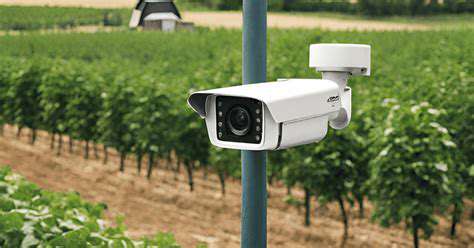
Protecting Sensitive Information
In today's interconnected world, safeguarding sensitive data is paramount. Data breaches can have devastating consequences, impacting individuals and organizations alike. Protecting personal information, financial records, and confidential business documents is crucial for maintaining trust and reputation. Robust security measures are essential to prevent unauthorized access, use, disclosure, disruption, modification, or destruction of data.
Implementing strong encryption protocols and access controls is vital. Regular security audits and vulnerability assessments help identify and address potential weaknesses in systems. Employees should be trained on best practices for data security, including password management and recognizing phishing attempts.
Implementing Robust Security Measures
Data security goes beyond simply having a firewall. It encompasses a multifaceted approach involving technology, policies, and people. Strong passwords, multi-factor authentication, and regular software updates are fundamental components of a robust security posture. Organizations should invest in advanced security tools to detect and respond to potential threats in real-time.
Regular security awareness training programs for employees can significantly improve the overall security posture. This training should cover topics such as phishing scams, social engineering tactics, and the importance of data privacy. Implementing a comprehensive incident response plan is critical to minimize the impact of security breaches should they occur.
Importance of Data Privacy Regulations
Data privacy regulations, such as GDPR and CCPA, provide crucial frameworks for organizations to protect personal data. Adhering to these regulations is essential to avoid significant penalties and maintain public trust. Understanding and complying with these regulations ensures that personal information is handled responsibly and ethically.
Organizations need to implement policies and procedures that align with data privacy regulations. This includes obtaining explicit consent for data collection, providing individuals with access to their data, and ensuring data is stored securely. A strong emphasis on data minimization, retention policies, and secure disposal practices is necessary for compliance.
Enhancing Data Security Through Awareness and Education
A significant component of data security is fostering a culture of awareness and education. Employees need to understand the potential risks and how to mitigate them. Regular security awareness training programs are essential to educate employees about best practices for data handling. This training should cover topics such as phishing scams, social engineering tactics, and the importance of data privacy.
Promoting a proactive approach to security within the organization is crucial. This involves encouraging employees to report suspicious activity, fostering a culture of trust where individuals feel comfortable raising concerns, and implementing systems for anonymous reporting. Employees should be empowered to recognize and report potential threats.
